This article was medically reviewed by Tu Anh Vu, DMD. Dr. Tu Anh Vu is a board certified dentist who runs her private practice, Tu's Dental, in Brooklyn, New York. Dr. Vu helps adults and kids of all ages get over their anxiety with dental phobia. Dr. Vu has conducted research related to finding the cure for Kaposi Sarcoma cancer and has presented her research at the Hinman Meeting in Memphis. She received her undergraduate degree from Bryn Mawr College and a DMD from the University of Pennsylvania School of Dental Medicine.
There are 14 references cited in this article, which can be found at the bottom of the page.
wikiHow marks an article as reader-approved once it receives enough positive feedback. This article received 21 testimonials and 87% of readers who voted found it helpful, earning it our reader-approved status.
This article has been viewed 3,194,489 times.
While you may want a mouth full of shiny, white teeth, a professional whitening treatment is expensive. Luckily, if your teeth aren't as white as you'd like them to be, there are some things you can try at home for a whiter smile. While none of these suggestions will work in the same way as a professional whitening service, they can help whiten your teeth and they won't cost you a fortune. Just remember to talk to your dentist before you try any home remedies to make sure they won't damage your teeth. With these simple steps, you can enjoy a whiter smile in a few weeks.
Steps
Using Whitening Strips
-
1Get ADA-approved whitening strips. These kits contain 2 sets of strips that go on your upper and lower teeth. Go to your local pharmacy and check the tooth care section for whitening strips. Look for the American Dental Association seal of approval to demonstrate that this product is safe.[1]
- Read and follow all the instructions on any product you use.
- Currently, Crest whitening strips are the only brand that has ADA approval.
- Don’t buy any products that aren’t ADA-approved. Some whitening strips contain harsh chemicals that could damage your tooth enamel and irritate your gums. For a list of ADA-approved bleaching products, visit https://www.mouthhealthy.org/en/ada-seal-products/category-display?category=Bleaching+Products.
-
2Brush and floss your teeth if the instructions tell you to. This removes any buildup on your teeth that could block the whitening gel or stop the strips from sticking properly. Brush, floss, and rinse your teeth normally before attaching the strips.[2]
- Not all whitening strips instruct you to brush your teeth first. Always check the instructions before you use them.
Advertisement -
3Press the strips onto your teeth. Open your mouth and curl your lips back so you can see all your teeth. Peel the backing paper off one strip and press the sticky side down onto the front of your bottom teeth. Run your finger along the strip to make sure it sticks completely. If the strip sticks out above your teeth, fold that part over the top. Then do the same for your top teeth.[3]
- Most kits don’t have different strips for your top and bottom teeth, but double check anyway to make sure.
- Wash your hands thoroughly before reaching into your mouth.
-
4Keep the strips attached for 10-45 minutes. The exact amount of time depends on how strong the whitening gel is, so leave them on for as long as the product instructs you to. While you wait, try lying back with your mouth slightly open so pull saliva away from your teeth.[4]
- Try to reduce the amount of times you swallow while the strips are attached. You might swallow some of the whitening chemicals, which could irritate your stomach.
- Don’t eat or drink while the strips are attached. Leave them in place and don’t touch or adjust them.
-
5Peel the strips off when the regimen is finished. After the correct amount of time has passed, reach into your mouth to the end of the strip and peel it off gently. Do the same for the other strip. Throw both of them away and don’t reuse them.[5]
- Leaving the strips on longer than instructed doesn’t increase the whitening affect. It only makes the chemicals irritate your teeth and gums.
- Make sure your hands are clean before reaching into your mouth. Wash them again if you’ve touched anything.
-
6Rinse your mouth to remove any leftover gel. Use water or a 50/50 water and mouthwash mixture. Swish the mixture around, focusing on the front of your teeth, to get any remaining gel off.[6]
- If you feel like more gel is stuck on your teeth, brush it off with your toothbrush and fluoride toothpaste.
- Removing the leftover gel is important because you could end up with white specks around your teeth if you leave the gel on in some spots.
-
7Repeat the treatment as often as the product instructs you to. Different products have different instructions, ranging from twice a day for a week to once a day for 2 weeks. Double check the packaging and follow the treatment that you’re instructed to.[7]
- If at any point your teeth feel overly sensitive or irritated, stop using the whitening strips. Contact your dentist and ask what you should do.
Cleaning Your Mouth with Whitening Products
-
1Use an ADA-approved whitening toothpaste. Some products on the market are designed for teeth whitening. Look for toothpastes containing baking soda or hydrogen peroxide, 2 main ingredients for whitening. Remember to check for the ADA seal and brush with the product like you normally would.[8]
-
2Brush your teeth with baking soda for a cheaper option. Whitening products can be expensive, and a simpler and more affordable option is using plain baking soda. Put a small spoonful of baking soda into a cup and add a few drops of water. Mix them together until the baking soda reaches a pasty consistency. Then dip your toothbrush in and brush your teeth normally.[11]
- Rinse your mouth thoroughly with water or mouthwash after using baking soda. Leaving it on your teeth could cause irritation or erode the enamel.
- You can also add baking soda to your regular toothpaste for a similar effect. Squeeze the normal amount on to your toothbrush and sprinkle some baking soda onto it before brushing.
-
3Rinse your mouth with a 1.5%-3% hydrogen peroxide solution. Many whitening products contain peroxide, and a low-concentration mixture can help whiten your teeth more cheaply. Pour the peroxide into a cup and dilute it with an equal amount of water. Then put some in your mouth after brushing and swish it around for 1-2 minutes. Spit it out and rinse your mouth with plain water.[12]
- Don’t swallow this mixture. It could irritate your stomach.
- Most pharmacies and drug stores carry peroxide. Make sure to get a low concentration to avoid irritating your mouth.
- You can also mix baking soda with peroxide instead of water to make a whitening toothpaste. Keep in mind that this mixture won’t taste very good, so dilute it with water if you find the flavor overwhelming.
Practicing Good Oral Hygiene
-
1Brush and floss your teeth twice a day for the best dental health.[13] While brushing and flossing won't remove existing stains, good mouth hygiene is essential to preventing more staining and to keeping your teeth in excellent shape. Use a soft-bristled toothbrush and fluoride toothpaste for the best results. When you’re done, floss in between all your teeth to remove any leftover food.[14]
- The best times to brush are in the morning after breakfast and before you go to bed. If you prefer to brush 3 times, do so after lunch.
- Wait at least 15 minutes before brushing your teeth after eating. This seems counterintuitive, but before this timeframe, the acid in your mouth is still active, and brushing can scrub off enamel.
- Don’t brush more than 3 times per day. This can scrub off enamel and make your teeth weaker.
- Floss at least once a day. A good time is at night, after brushing and before going to bed.
-
2Gargle with mouthwash to prevent stains from leftover bacteria. Brushing doesn’t remove all the bacteria in your mouth. After you brush, rinse your mouth for another minute using an ADA-approved mouthwash to prevent plaque from building up and staining your teeth.[15]
- Remember to look for the ADA seal on any mouthwash products you use.
- If the mouthwash is too strong or minty and burns your gums, dilute it with an equal amount of water.
-
3Schedule dental cleanings every 6 months to remove deep stains.[16] Have your dentist clean your teeth professionally at your regularly-scheduled appointments. This will help you maintain good dental hygiene, spot any cavities, and keep teeth white and healthy.[17]
- You can also consult your dentist about a professional teeth-whitening session or products to use at home.
-
4Limit your consumption of foods or beverages that stain your teeth.[18] The best way to keep your teeth white is prevent them from getting stained in the first place. Common items that stain your teeth are coffee (especially black coffee), red wine, and dark soda. Have these drinks less often to avoid staining your teeth.[19]
- Smoking also stains your teeth. Quit smoking or don’t start in the first place.[20]
- If you’re drinking a cold, dark liquid, try using a straw to keep it away from your teeth.
-
5Avoid using any acidic or herbal whitening remedies.[21] There are many other DIY teeth whitening remedies on the internet. Most of these are not scientifically valid, and some are even harmful. Stick with products and methods approved by the ADA to avoid damaging your teeth.[22]
- A common suggestion is using lemon juice on your teeth. This is dangerous because lemons are very acidic and they could break down your tooth enamel.
- Other remedies, like turmeric powder, have not been evaluated for effectiveness.
Consulting Your Dentist if Needed
-
1Check with your dentist before you whiten your teeth. Talk to your dentist about the products you’re planning to use to whiten your teeth. They may be able to determine whether or they’ll be effective for your particular discoloration or safe for use.[23]
- If you have any small cracks in your teeth, your dentist may advise against using whitening products. The chemicals could irritate the tooth pulp if it’s exposed.[24]
-
2Get medical care if your gums turn white or bleed. Whitening solutions can cause chemical burns on your gums which can make them appear white or cause them to be. This is usually harmless and clears up on its own, but you should still get it checked out to make sure there isn’t heavy damage. In the meantime, stop using any products that caused this.[25]
- The tissue should return to normal after a few days.
-
3See a doctor if you experience severe stomach pain. Some whitening products can cause pain and inflammation in your stomach if you swallow it. Mild discomfort can be a normal side effect, but if you experience severe pain or diarrhea or vomiting that lasts longer than 2 days, visit a doctor to make sure there isn’t a serious problem.[26]
- Stop using the product if you experience severe pain, vomiting, or diarrhea.
-
4Talk to your dentist if your teeth become more sensitive. A possible side effect of whitening your teeth is that they could become more sensitive. Some sensitivity is normal, but if your teeth become extremely sensitive to heat or cold, talk to your dentist to make sure your teeth aren’t damaged.[27]
- The dentist may advise you to stop using whitening products or suggest a different one. Follow their instructions.
Expert Q&A
Did you know you can get expert answers for this article?
Unlock expert answers by supporting wikiHow
-
QuestionWill brushing longer or harder make my teeth whiter?
 Joseph Whitehouse, MA, DDSDr. Joseph Whitehouse is a board certified Dentist and the Former President of the World Congress on Minimally Invasive Dentistry (WCMID). Based in Castro Valley, California, Dr. Whitehouse has over 46 years of dental experience and counseling experience. He has held fellowships with the International Congress of Oral Implantology and with the WCMID. Published over 20 times in medical journals, Dr. Whitehouse's research is focused on mitigating fear and apprehension patients associate with dental care. Dr. Whitehouse earned a DDS from the University of Iowa in 1970. He also earned an MA in Counseling Psychology from California State University Hayward in 1988.
Joseph Whitehouse, MA, DDSDr. Joseph Whitehouse is a board certified Dentist and the Former President of the World Congress on Minimally Invasive Dentistry (WCMID). Based in Castro Valley, California, Dr. Whitehouse has over 46 years of dental experience and counseling experience. He has held fellowships with the International Congress of Oral Implantology and with the WCMID. Published over 20 times in medical journals, Dr. Whitehouse's research is focused on mitigating fear and apprehension patients associate with dental care. Dr. Whitehouse earned a DDS from the University of Iowa in 1970. He also earned an MA in Counseling Psychology from California State University Hayward in 1988.
Board Certified Dentist
-
QuestionMy teeth are very yellow and I don't know what to do to whiten them. What can I do?
 Cristian Macau, DDSDr. Macau is an oral surgeon, periodontist, and aesthetician at Favero Dental Clinic in London. He received his DDS from Carol Davila University of Medicine in 2015.
Cristian Macau, DDSDr. Macau is an oral surgeon, periodontist, and aesthetician at Favero Dental Clinic in London. He received his DDS from Carol Davila University of Medicine in 2015.
Doctor of Dental Surgery You can try one of the above home whitening remedies, such as using baking soda or hydrogen peroxide for a month or so. If you are pleased with the result, keep doing it once every 3 days but avoid smoking and also colored foods or drinks. If the result is not satisfactory then you should opt for a professional whitening in the dental office.
You can try one of the above home whitening remedies, such as using baking soda or hydrogen peroxide for a month or so. If you are pleased with the result, keep doing it once every 3 days but avoid smoking and also colored foods or drinks. If the result is not satisfactory then you should opt for a professional whitening in the dental office. -
QuestionWhat if I take the baking soda with lime every day?
 Cristian Macau, DDSDr. Macau is an oral surgeon, periodontist, and aesthetician at Favero Dental Clinic in London. He received his DDS from Carol Davila University of Medicine in 2015.
Cristian Macau, DDSDr. Macau is an oral surgeon, periodontist, and aesthetician at Favero Dental Clinic in London. He received his DDS from Carol Davila University of Medicine in 2015.
Doctor of Dental Surgery
Warnings
- Read the instructions carefully when using commercial preparations for whitening teeth.⧼thumbs_response⧽
- Don’t use any fruit juices on your teeth, as some DIY-whitening guides tell you to. Fruit juice is very acidic and can break down your tooth enamel.[31]⧼thumbs_response⧽
- Baking soda can dissolve orthodontic glue. Do not use this method if you have braces or a permanent retainer.[32]⧼thumbs_response⧽
- Be careful not to swallow hydrogen peroxide during the whitening process. Swallowing it can cause severe stomach irritation.[33]⧼thumbs_response⧽
- Don't brush too hard for a long term as it may damage your enamel (which is called abrasion), leading to hypersensitivity.[34]⧼thumbs_response⧽
References
- ↑ https://www.mouthhealthy.org/en/az-topics/w/whitening
- ↑ https://askthedentist.com/crest-whitestrips/
- ↑ https://health.clevelandclinic.org/is-teeth-whitening-safe/
- ↑ https://health.clevelandclinic.org/is-teeth-whitening-safe/
- ↑ https://health.clevelandclinic.org/is-teeth-whitening-safe/
- ↑ https://askthedentist.com/crest-whitestrips/
- ↑ https://health.clevelandclinic.org/is-teeth-whitening-safe/
- ↑ https://www.mayoclinic.org/healthy-lifestyle/adult-health/expert-answers/whitening-toothpaste/faq-20058411
- ↑ https://www.urmc.rochester.edu/patients-families/health-matters/june-2016/diy-teeth-whitening-too-good-to-be-true.aspx
- ↑ Joseph Whitehouse, MA, DDS. Board Certified Dentist. Expert Interview. 9 April 2020.
- ↑ https://www.mayoclinic.org/healthy-lifestyle/adult-health/expert-answers/whitening-toothpaste/faq-20058411
- ↑ https://www.ncbi.nlm.nih.gov/pubmed/24902405
- ↑ Tu Anh Vu, DMD. Board Certified Dentist. Expert Interview. 10 April 2020.
- ↑ https://health.clevelandclinic.org/is-teeth-whitening-safe/
- ↑ https://www.ada.org/en/science-research/ada-seal-of-acceptance/ada-seal-shopping-list
- ↑ Tu Anh Vu, DMD. Board Certified Dentist. Expert Interview. 10 April 2020.
- ↑ https://health.clevelandclinic.org/is-teeth-whitening-safe/
- ↑ Tu Anh Vu, DMD. Board Certified Dentist. Expert Interview. 10 April 2020.
- ↑ https://health.clevelandclinic.org/is-teeth-whitening-safe/
- ↑ Joseph Whitehouse, MA, DDS. Board Certified Dentist. Expert Interview. 9 April 2020.
- ↑ Tu Anh Vu, DMD. Board Certified Dentist. Expert Interview. 10 April 2020.
- ↑ https://www.urmc.rochester.edu/patients-families/health-matters/june-2016/diy-teeth-whitening-too-good-to-be-true.aspx
- ↑ https://www.mayoclinic.org/healthy-lifestyle/adult-health/expert-answers/whitening-toothpaste/faq-20058411
- ↑ https://www.urmc.rochester.edu/patients-families/health-matters/june-2016/diy-teeth-whitening-too-good-to-be-true.aspx
- ↑ https://www.mayoclinic.org/healthy-lifestyle/adult-health/expert-answers/whitening-toothpaste/faq-20058411
- ↑ https://health.clevelandclinic.org/is-teeth-whitening-safe/
- ↑ https://www.urmc.rochester.edu/patients-families/health-matters/june-2016/diy-teeth-whitening-too-good-to-be-true.aspx
- ↑ https://www.mouthhealthy.org/en/az-topics/w/whitening
- ↑ https://www.mouthhealthy.org/en/nutrition/food-tips/water-best-beverage
- ↑ https://medlineplus.gov/ency/article/003065.htm
- ↑ https://www.urmc.rochester.edu/patients-families/health-matters/june-2016/diy-teeth-whitening-too-good-to-be-true.aspx
- ↑ https://trufamilydental.com/choosing-toothpaste/
- ↑ https://www.poison.org/articles/2012-jun/hydrogen-peroxide
- ↑ https://www.mouthhealthy.org/en/brushing-mistakes-slideshow
About This Article
To whiten your teeth at home, rinse your mouth with equal parts water and 3% hydrogen peroxide every day before you brush your teeth. You can also whiten your teeth at home by brushing your teeth with baking soda twice a week. Or, you can mix lemon juice and baking soda together and then apply the mixture to your teeth once a week. Leave the lemon juice and baking soda on for 1 minute before brushing it off with your toothbrush. To learn lifestyle changes you can make to keep your teeth white after you whiten them, read on!

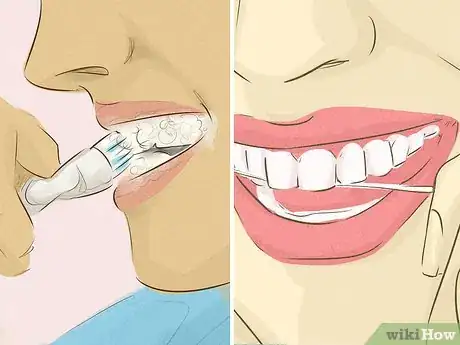
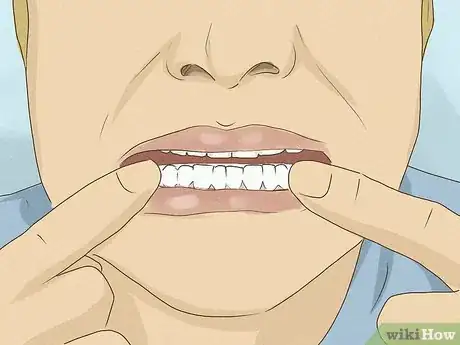
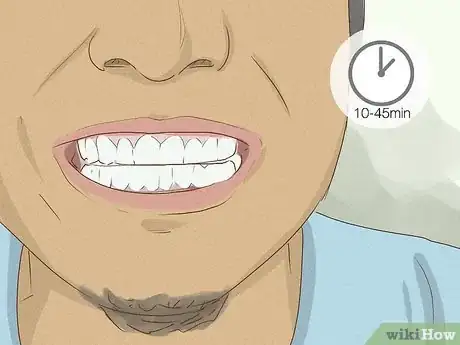
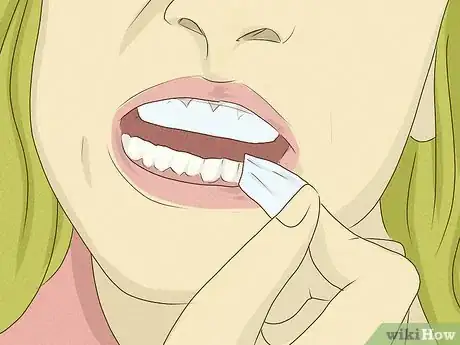
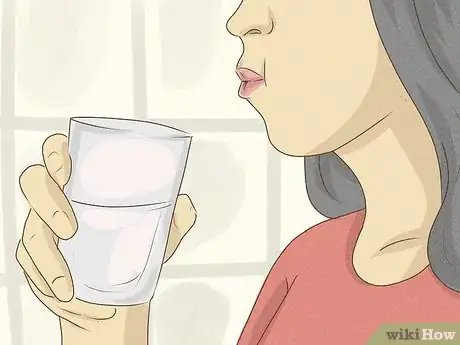
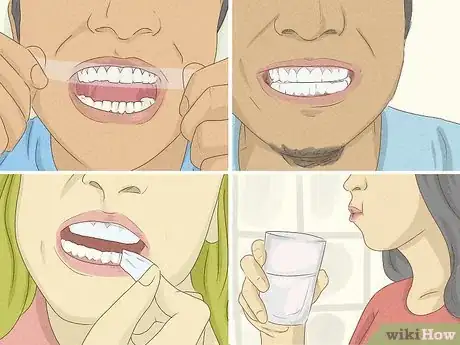
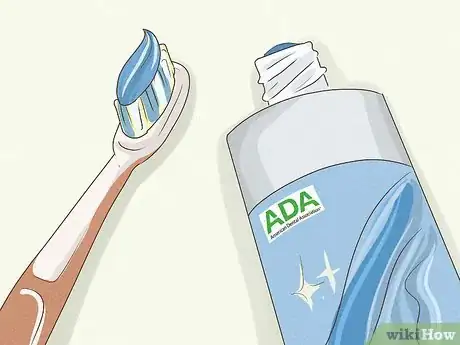

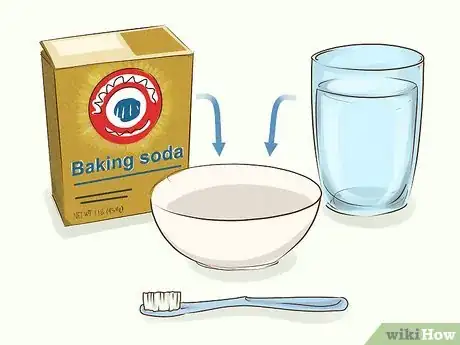
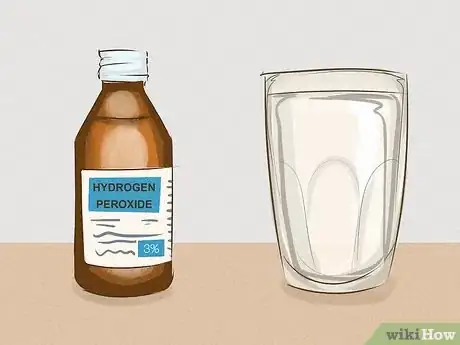
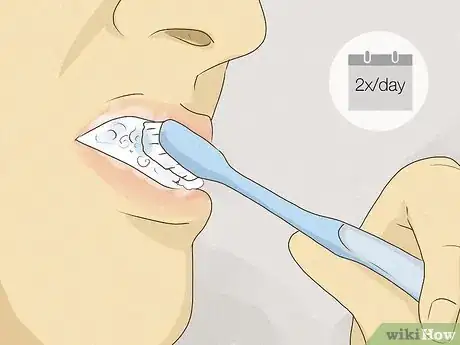

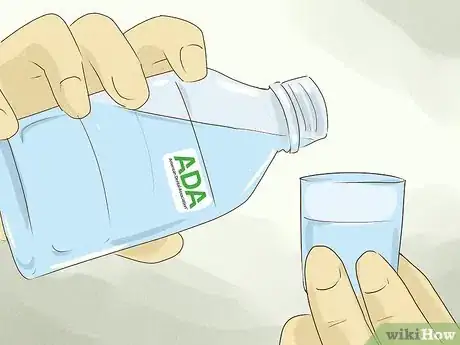
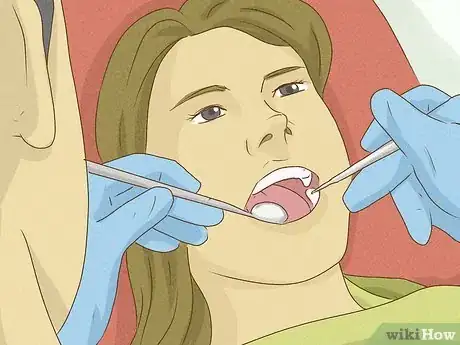
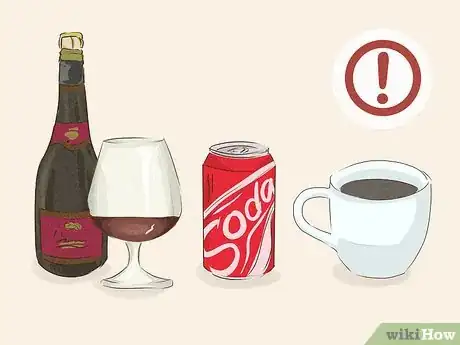
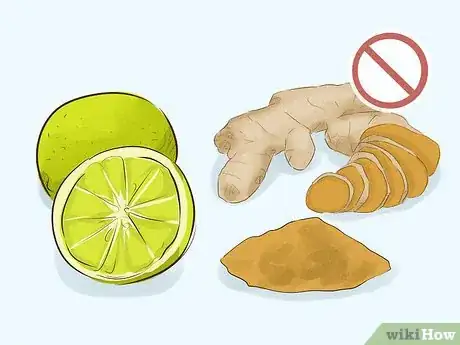
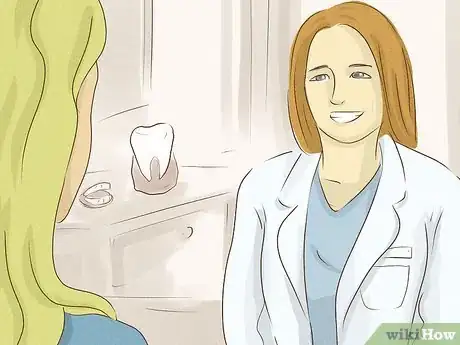
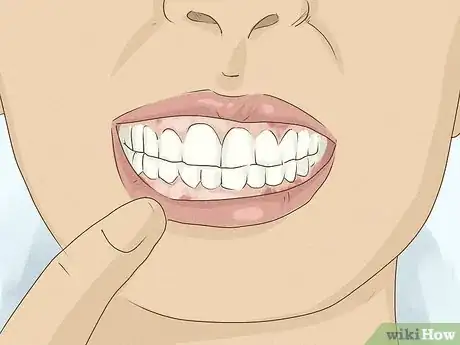
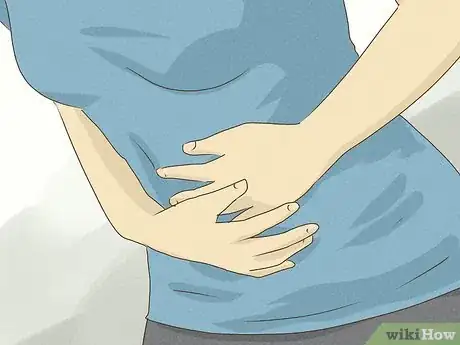
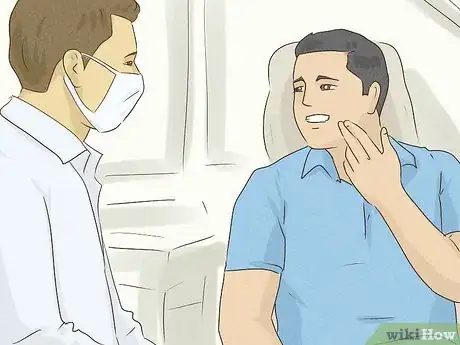

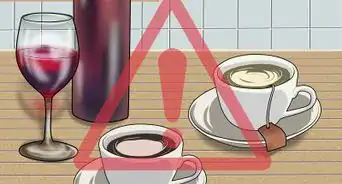
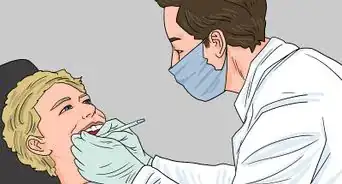
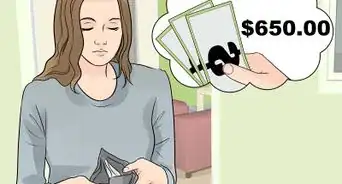
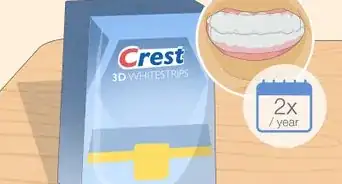
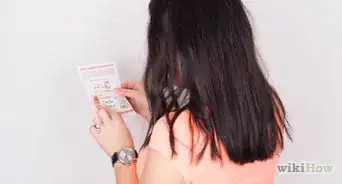
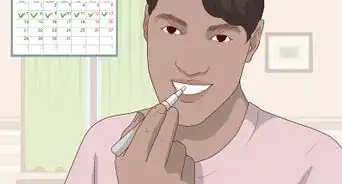
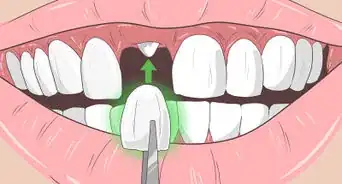

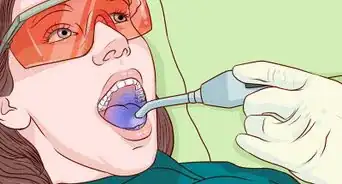
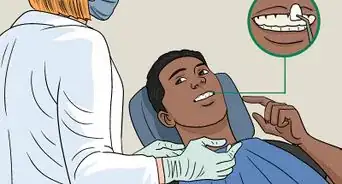
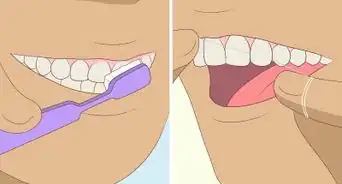










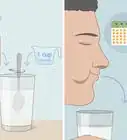
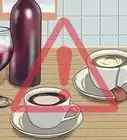
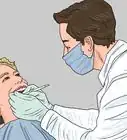




































Medical Disclaimer
The content of this article is not intended to be a substitute for professional medical advice, examination, diagnosis, or treatment. You should always contact your doctor or other qualified healthcare professional before starting, changing, or stopping any kind of health treatment.
Read More...